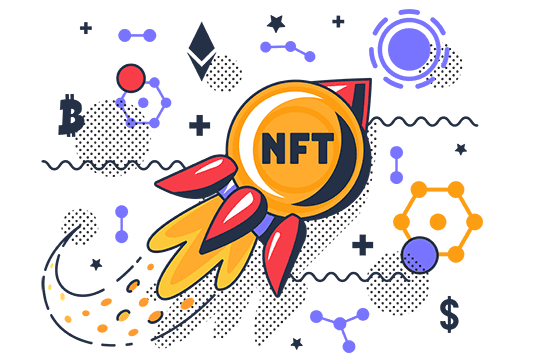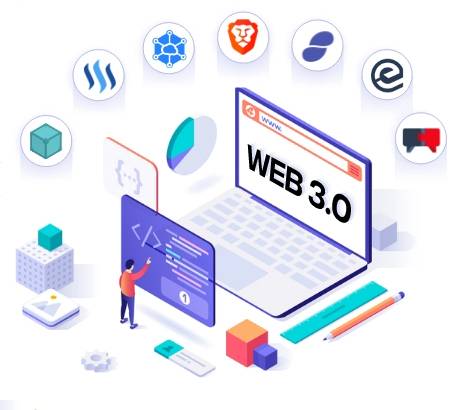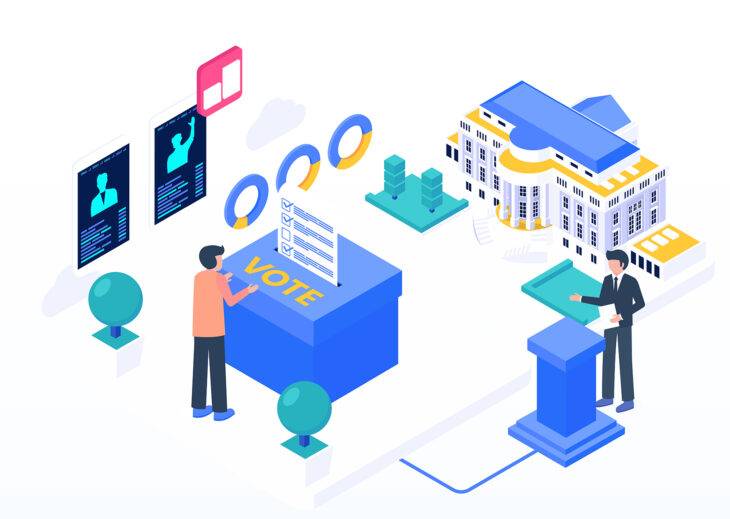Protecting and monetizing intellectual property is critical in media and entertainment. Blockchain technology has industry-wide benefits for media firms, potentially altering the way information is created, consumed, and secured.
While blockchain is most closely identified with cryptocurrencies such as bitcoin, the new technology has the potential to enable a wide variety of business applications across a variety of industries. Media and entertainment present an intriguing use case because of two issues that have plagued the business as content has migrated to the digital realm: the capacity to secure and monetize intellectual property.
While blockchain technology is still in its infancy, given the excitement surrounding the numerous applications, it is not too soon for media and entertainment organizations to consider the potential ramifications for their businesses and the industry as a whole. Blockchain technology has the ability to fundamentally alter how the material is created, aggregated, distributed, and consumed—and the implications for content creators, brokers, and arbiters of intellectual property are far too significant to ignore.
What Is Blockchain Technology and How Does It Operate?
A blockchain is a secure and encrypted digital database that all participants share in a distributed network in the most straightforward words. Every transaction that occurs on the network is recorded, verified, and saved in the database, where it is accessible to all participants, thereby establishing an unalterable transaction log. “This effectively culminates in the creation of a golden source of truth in which everyone can place their trust. That is one of the primary reasons it is referred to as the ‘technology of trust,'” explains Christine Moy, program head at J.P. Morgan’s Blockchain Center of Excellence. This structure endows a blockchain with unique qualities, including increased transparency and security, due to the ability to follow, thoroughly verify, and audit transaction activity.
The term “blockchain” refers to a type of distributed ledger technology. Multiple copies of data reside throughout a network in a distributed database rather than on a single centralized server or database. Since control of the database can be dispersed over the entire network rather than being centralized, participants have near real-time access to the same data version. The database’s decentralized management enables faster, more cost-effective transaction processing, resulting in increased corporate efficiency and cost savings.
Applications in the Media and Entertainment
Blockchain technology has the potential to alter a variety of areas within media and entertainment, but particularly those where participants would benefit from increased security and transparency, such as payment distribution, funding, monetization, and contract enforcement.
1. Content Micropayments – By enclosing media behind subscription-based paywalls, content publishers risk losing revenue from customers who are unwilling to pay for a whole subscription but would pay a lower cost to read a single article or binge-watch an entire season of a television show.
Consumption on a pay-per-use basis may become possible with the help of blockchain-based micropayments. The capacity of blockchain to maintain a complete record of its data may enable more precise monitoring of when and how copyrighted content is consumed. Typically, implementing a micropayment pricing model would be inefficient, but its implementation may be totally automated and cost-effective with blockchain.
2. The Abolition of Aggregated Content – The decentralized structure of blockchain technology may enable content creators — such as artists or writers — to distribute their work directly to customers, circumventing traditional distribution methods and allowing content creators to keep a larger portion of money. This might have a ripple effect on everyone from colossal media outlets to independent blogs, allowing artists to establish direct contact with consumers.
3. Distribution of Royalties – The collection and distribution of royalties in the music industry have become more complicated and opaque as music streaming services have grown in popularity. Each time a song is streamed or used in a television broadcast, the distributor is required to compensate the music’s copyright holder. Still, disagreements about the accuracy and rate of such royalties might emerge.
By automatically executing contract conditions among qualified parties, smart contracts created on a blockchain and associated with a specific piece of music can add precision, speed, and trust to the process. This would enable more precise tracking of a song’s consumption, faster royalty payments, and greater openness regarding contract terms and revenue distribution between artists and other stakeholders. Additionally, it would likely disrupt or remove the role of copyright collecting groups, which currently act as centralized payment intermediaries for rights holders.
4. Direct Sales to Consumers – As with greater tracking of music usage, blockchain technology may enable other types of content owners to maintain tighter control over their intellectual works. While illegal peer-to-peer file-sharing of television series, films, and other content is currently prevalent, file sharing has the potential to evolve into a legitimate practice that can be regulated and monetized. When customers purchase or subscribe to material hosted on the blockchain and then share it with a friend, content owners can track and charge for such distribution. This would provide additional cash for content creators and increase openness regarding the consumption and sharing of intellectual assets.
The Blockchain’s Difficulties
Blockchain technology has the potential to generate additional revenue streams for new and old content while also providing content owners with increased security of their intellectual property. However, the technology is still in its infancy, and these applications are still in development. Early adopters must be mindful of potential difficulties and expenditures. At the moment, blockchain technology is uncontrolled, and clear rules for exploiting the technology to create value must be developed. “For any legitimate blockchain use case that involves several constituents, there must be a driving force for standardization among those participants,” Moy explains.
Additionally, getting the full benefits of blockchain may necessitate the replacement of existing technology in some instances. Integrating technology into existing processes and developing, testing, and securing it will take time. Additionally, there is the issue of storing all of this intellectual property. Will vast volumes of transaction data require third-party storage, and if so, who owns that real estate? Addressing these issues and establishing a common ground will require time. It is critical for members of the media sector to collaborate on defining standards for blockchain application and identifying areas where the technology could benefit key industry stakeholders, from content creators to content aggregators and distributors.
Getting Ready for Blockchain
The media and entertainment industry is a contract-driven industry that places a premium on intellectual property protection. Blockchain technology can boost content creators’ and media firms’ earnings and enable real-time consumption-based pricing. As blockchain technology advances, executives in the media and entertainment industries should educate themselves on the technology and its possible applications for their businesses.
It will be critical to understand how blockchain fits into the company’s overall strategy, its priorities, and whether the technology can materially impact the business model. While the technology is still in its infancy, it has the potential to fundamentally alter how information is created, consumed, and protected—and it’s critical to begin considering the possible benefits and barriers to adoption now.
This article is also published on LinkedIn and Medium.















